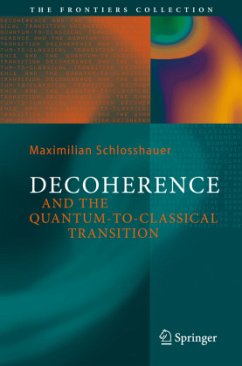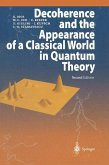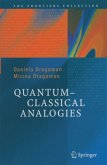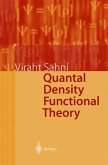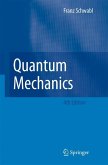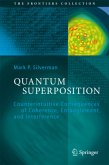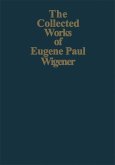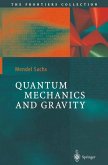Over the course of the past decade, decoherence has become a ubiquitous scienti?c term popular in all kinds of research, from fundamental theories of quantum physics to applications in nanoengineering. Decoherence has been hailed as the solution to long-standing foundational problems dating back to the beginnings of quantum mechanics. It has been cursed as the key obstacle to next-generation technologies, such as quantum computers (another se- ingly omnipresent ?eld of research). And while decoherence has been directly observed in various experiments, its scope and meaning have often been m- understood and misrepresented. Decoherence makes a fantastic subject of research, as it touches upon many di?erent facets of physics, from phi- sophically inclined questions of interpretation all the way to down-to-earth problems in experimental settings and engineering applications. This book will introduce the reader, in an accessible and self-contained manner, to these various fascinating aspects of decoherence. It will focus in particularontherelationofdecoherencetotheso-calledquantum-to-classical transition, i. e. , the question of how decoherence may explain the emergence of the classical appearance of the macroscopic world around us from the underlying quantum substrate. Thescopeofthisbookisrelativelybroadinordertofamiliarizethereader withthemanyfacetsofdecoherence,inboththetheoreticalandexperimental domains. Throughout the book, I have sought to maintain a healthy balance betweentheconceptualideasassociatedwiththedecoherenceprogramonthe one hand and the formal and mathematical details on the other hand. This book will establish a proper understanding of decoherence as a pure quantum phenomenon and will emphasize the importance of the correct interpretation of theconsequences and achievements of decoherence.
From the reviews:
"A thorough and readable representation of today's understanding of the topic ... An excellent overview of the various theoretical approaches to the physics that leads to decoherence. A particular strength is that it includes accounts of several experiments demonstrating the decoherence mechanism in detail ... An important resource for anyone interested in decoherence. It is very well written and it will contribute to further conceptual and theoretical development and to new experiments."
Review by Anton Zeilinger, published in Nature 451, 18 (2008)
"An excellent monograph about what the best current thoughts are on the link between quantum and classical physics. ... rewarding reading for physicists who do not have the time or the mathematical preparation to delve into all the details. For such readers, the book includes interesting and accessible discussions of recent experiments ... . a welcome contribution. The index is well organized to help readers find their way around. And the more than 500 up-to-date references are a bonus for the more interested, persistent reader." (Eugen Merzbacher, Physics Today, September, 2008)
"A very fine tour of the decoherence program in all its facets. ... Schlosshauer's book is highly recommended. ... [He] has written an excellent survey of a field that is of the greatest possible interest for the foundations of quantum physics." (N. P. Landsman, Studies in History and Philosophy of Modern Physics, Vol. 40, 2009)
"A thorough and readable representation of today's understanding of the topic ... An excellent overview of the various theoretical approaches to the physics that leads to decoherence. A particular strength is that it includes accounts of several experiments demonstrating the decoherence mechanism in detail ... An important resource for anyone interested in decoherence. It is very well written and it will contribute to further conceptual and theoretical development and to new experiments."
Review by Anton Zeilinger, published in Nature 451, 18 (2008)
"An excellent monograph about what the best current thoughts are on the link between quantum and classical physics. ... rewarding reading for physicists who do not have the time or the mathematical preparation to delve into all the details. For such readers, the book includes interesting and accessible discussions of recent experiments ... . a welcome contribution. The index is well organized to help readers find their way around. And the more than 500 up-to-date references are a bonus for the more interested, persistent reader." (Eugen Merzbacher, Physics Today, September, 2008)
"A very fine tour of the decoherence program in all its facets. ... Schlosshauer's book is highly recommended. ... [He] has written an excellent survey of a field that is of the greatest possible interest for the foundations of quantum physics." (N. P. Landsman, Studies in History and Philosophy of Modern Physics, Vol. 40, 2009)
Aus den Rezensionen:
"... Dem Autor ist eine kompetente, klare und äußerst kurzweilige Einführung in dieses spannende Gebiet gelungen, die sowohl die Grundlagen als auch die immer zahlreicheren Anwendungen behandelt. Dem Autor gelingt durchweg die schwierige Balance zwischen begrifflicher und mathematischer Behandlung. ... Schlosshauers Buch ist ein Muss für alle, denen an einem Verständnis der Quantentheorie gelegen ist. Insbesondere sei es Studierenden ans Herz gelegt, die gerade die Kursvorlesung Quantenmechanik gehört haben ..."
(Claus Kiefer, in: Physik Journal, 2008, Vol. 7, Issue 8/9, S. 128)
Aus den Rezensionen:
"... Maximilian Schlosshauer ... hat sich der rätselhaften Realität der Quantenwelt zugewandt und in seinem umfangreichen Buch vor allem das Phänomen der 'Decoherence' untersucht ... Nach einer Einführung in die Quantenphysik erläutert er ... zunächst ausführlich den gegenwärtigen Stand der theoretischen und experimentellen Grundlagen der Dekohärenz einschließlich ihrer Messung in immer größeren Systemen und ihrer Bedeutung für Quantencomputer. Am Schluss geht er auch kritisch auf quantenphysikalisch inspirierte Erklärungsversuche von Gehirn und Bewusstsein ein."
(in: Das Science Fiction Jahr 2008, 2008, S. 778 f.)
"... Dem Autor ist eine kompetente, klare und äußerst kurzweilige Einführung in dieses spannende Gebiet gelungen, die sowohl die Grundlagen als auch die immer zahlreicheren Anwendungen behandelt. Dem Autor gelingt durchweg die schwierige Balance zwischen begrifflicher und mathematischer Behandlung. ... Schlosshauers Buch ist ein Muss für alle, denen an einem Verständnis der Quantentheorie gelegen ist. Insbesondere sei es Studierenden ans Herz gelegt, die gerade die Kursvorlesung Quantenmechanik gehört haben ..."
(Claus Kiefer, in: Physik Journal, 2008, Vol. 7, Issue 8/9, S. 128)
Aus den Rezensionen:
"... Maximilian Schlosshauer ... hat sich der rätselhaften Realität der Quantenwelt zugewandt und in seinem umfangreichen Buch vor allem das Phänomen der 'Decoherence' untersucht ... Nach einer Einführung in die Quantenphysik erläutert er ... zunächst ausführlich den gegenwärtigen Stand der theoretischen und experimentellen Grundlagen der Dekohärenz einschließlich ihrer Messung in immer größeren Systemen und ihrer Bedeutung für Quantencomputer. Am Schluss geht er auch kritisch auf quantenphysikalisch inspirierte Erklärungsversuche von Gehirn und Bewusstsein ein."
(in: Das Science Fiction Jahr 2008, 2008, S. 778 f.)

